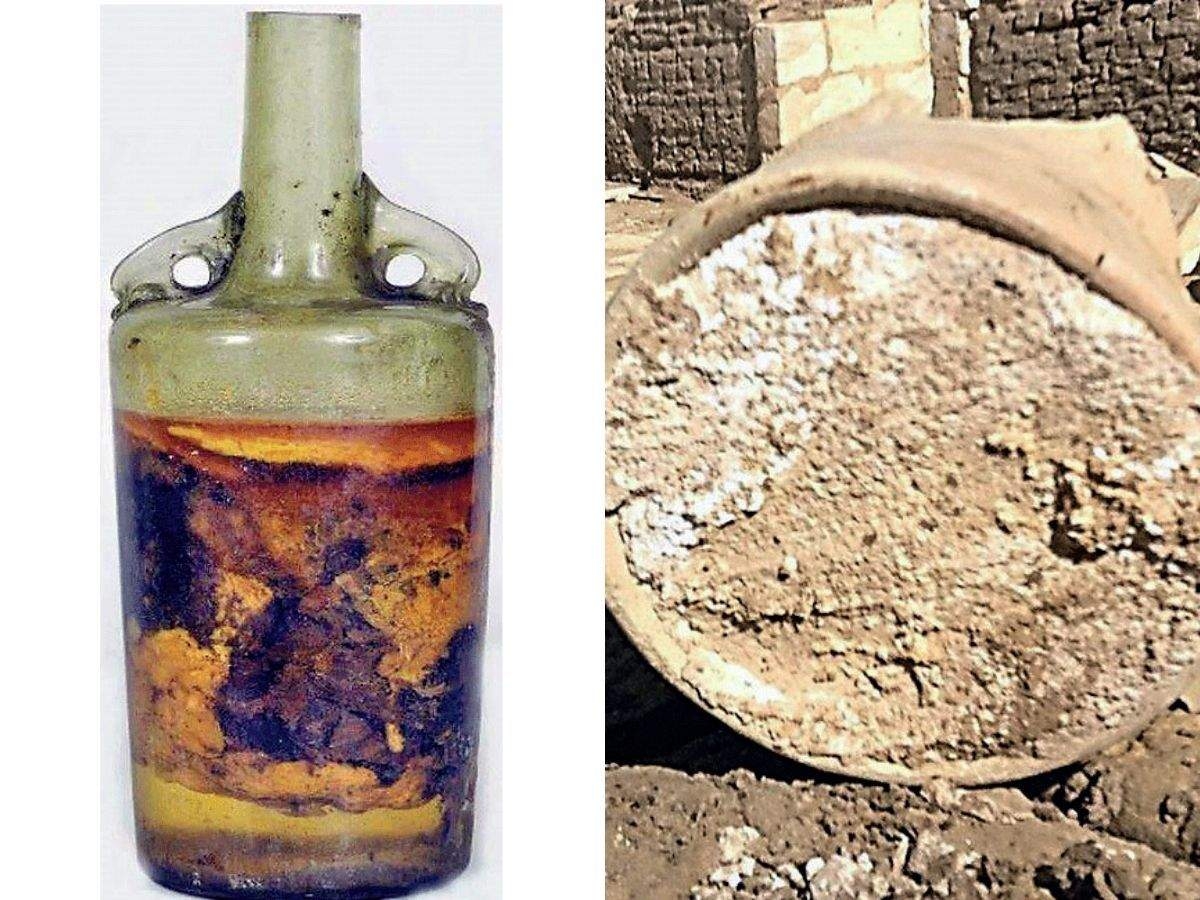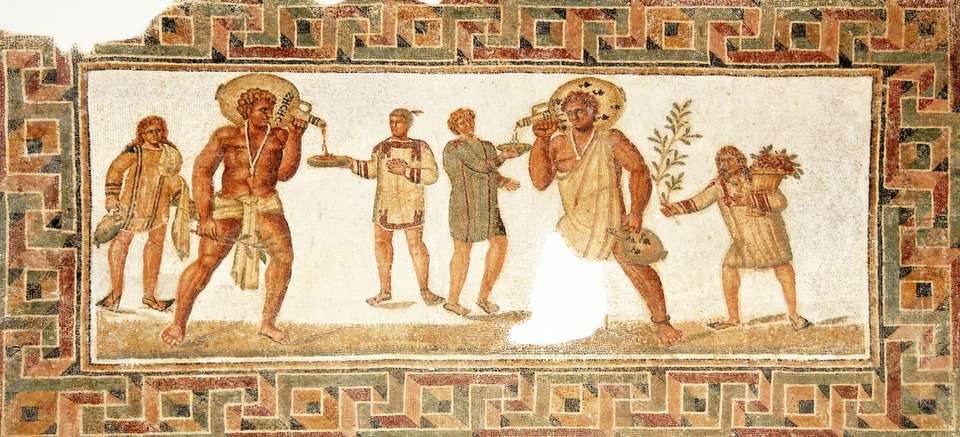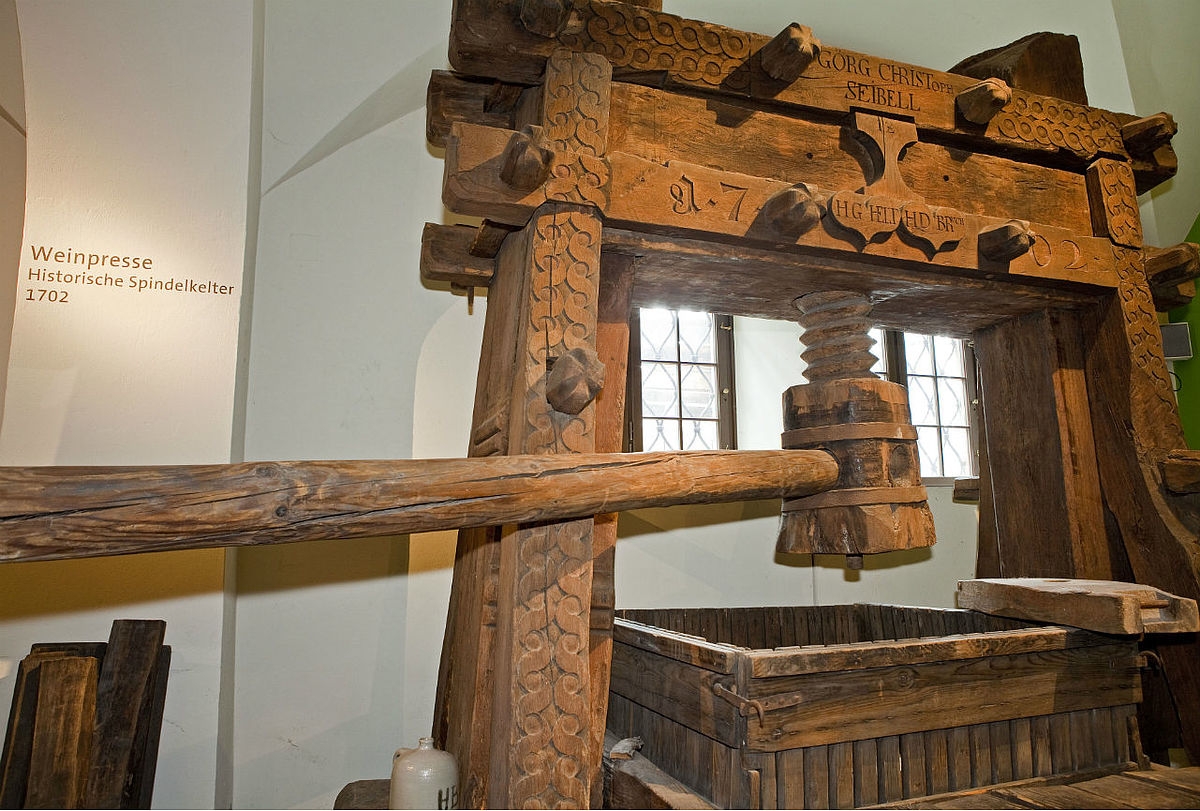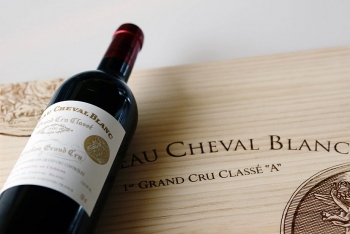What Is The Oldest Bottle Of Wine In The World?
 |
| Speyer wine. Photo: indiatimes |
The Speyer wine bottle is believed to be the oldest bottle of wine in the world and is dated to around 325 AD – 350 AD. The bottle was unearthed in 1867 and one of 16 found in a sarcophagus in the grave of a Roman nobleman and his wife – the bottle was the only one still intact. The liquid, which is no longer alcohol, has most likely survived this long because the bottle was sealed with wax and olive oil was poured into the bottle to preserve the wine.
Since its discovery, experts have debated on whether or not the wine should be opened and analyzed. For now, the bottle remains unopened as part of the Pfalz Historical Museum collection in the German City of Speyer.
History of Wine
Even though the oldest evidence of wine production was found in Armenia around 4100 BC, it would be safe to say that Western tradition of producing and drinking wine most likely started in the territory of Classical Greece, when people drank it during breakfast. A person who didn't drink wine in ancient Greece was considered a barbarian and the Greeks worshiped Dionysus as the God of wine and partying.
The Romans adopted their love for wine from the Greeks and spread its production and consumption across their vast empire. Many centuries later, wine production and consumption would dramatically increase in most parts of the world, burgeoning from the 15th century onwards as part of European expansion.
That possibly explains why wine, more than any other man-made liquid, has always been invested with layers of social significance, stigma, and messaging. It's associated with thousands of years of human history and carries incredible value as a symbol that communicates your social class when consuming it.
Golden Age of Wine and the Discovery of the Speyer Bottle
The period from around 1810 until 1875 has been termed by modern historians as the golden age of wine. In northern Europe, the industrial revolution and the influx of wealth from expanding overseas empires was providing a growing middle class with resources for luxuries, some of which included wine. Legal structures were changing to facilitate credit and investment was becoming more widespread – so it was easier to expand wine production.
Another key change was heralded by the free-trade agreement between France and Britain in 1861. This led to a period when tariffs on wines were almost entirely gone – thus ensuring that export growth stimulated production not merely for the French, but also for the Germans and Spanish, and, to a lesser extent, Italians. It was during that period (1867), when a bottle of unusual wine was discovered in Germany.
As Natalia Klimczak reports in a previous Ancient Origins article , a Roman noble was buried with a bottle of locally produced wine around 350 AD. When his burial was unearthed near the city of Speyer in Germany, the researchers were shocked to see that there was still liquid within the bottle.
The Roman Wine of Speyer - the Oldest Liquid Wine in the World
 |
| Photo: rosehillwinecellars |
Date: 325 AD – 350 AD
Country of Origin: Germany
Value: N/A
This is the oldest wine of the world – and it is still liquid at its core. The Historical Museum of Pfalz in Speyer guards one of the biggest treasures of viticulture in all of Germany - wine from around the year 325 AD, preserved in a yellow-green cylindrical glass bottle adorned with two handles shaped like dolphins.
The vessel was found in 1867 when archeologists discovered a tomb in Speyer with two sarcophagi – graves of a man and a woman, buried here in the 4th century.
Six glass vessels were found in the woman's tomb, ten vessels in the sarcophagus of the man. Probably, all of them once contained liquids of various kinds, provisions for the dead on their long journey to the underworld. Only in one bottle though, was some sort of liquid preserved. The bottle contains a residue of a clear liquid and, above that, filling about two thirds of the bottle- a firm resinous mixture. Analyses have shown at least parts of the liquid to have once been wine, although there's definitely no alcohol left in it.
Experts explained why wine survived in this particular bottle by looking at the mixture. A small amount of wine was once poured into the bottle together with a herbal mixture onto which a larger amount of olive oil was poured, thus conserving the wine by sealing it from oxygen. The amount of olive oil, however, was so thick and tight that its resin-like texture sufficed to conserve the Roman Wine for more than 1680 years.
The Roman Wine is not the only thing to bear witness to the 2000 years of viticulture in the Palatinate: The Museum of Wine, a small part of the Historical Museum of Pfalz, documents the history of viticulture along the Rhine and its side valleys with a range of other exhibits. Wine presses and elaborate wooden casks can be seen as well as a wine bottle from the 1687 vintage, that was found on the Steinauer vineyard near Naumburg on the Saale river in 1913. This is the oldest wine bottle in Germany that is still completely filled with wine, according to Germanwines.
Debate Whether the Speyer Bottle Should be Opened or Not
It’s no secret that the older a bottle of wine is, the better its contents will taste. In this case, however, the Speyer Bottle is so old that many experts doubt if its wine is drinkable. Widely considered as the oldest known liquid wine recovered from any archaeological site, the bottle has been dated between 325 and 350 AD.
Although it was analyzed by a chemist during the First World War, the bottle was never opened. A splash of olive oil and a seal of hot wax has kept the white wine liquid down in the 1,650 years since it was made. The wine bottle has been on display at the Pfalz Historical Museum for more than a century and though it is a curious artifact no research team dares to open it.
During the past few years though, researchers are debating if they should open it or not, with many microbiologists insisting that the opening of the bottle could be dangerous. The museum’s wine department curator Ludger Tekampe stated a few years ago as Daily Mail reported , “We are not sure whether or not it could stand the shock to the air. It is still liquid and there are some who believe it should be subjected to new scientific analysis but we are not sure.” Furthermore, wine Professor Monika Christmann added, “Microbiologically it is probably not spoiled, but it would not bring joy to the palate.”
So, rephrasing William Shakespeare, we wonder: to open or not to open? It looks like this dilemma will continue “torturing” wine experts and scientists for many years to come, Ancient-origins cited.
No one wants to open the world's oldest bottle of wine
 |
| Photo: germanwines |
The Speyer bottle, though, remains unopened, mainly because the museum that holds it is scared of what could happen if the seal is broken. No, not that they think there's a curse or something, it's not like they opened a Pharaoh's tomb or something. Instead, they're worried they might ruin the bottle and its contents, The Local said.
Museum directors fear that in opening the bottle, outside air may get into the bottle and damage what little liquid is left. Not to mention, the bottle could accidentally shatter in the process.
Even scarier is what could come out of the bottle. No one's volunteered to drink it yet, but scientists believe some chemical changes may have occurred. In other words, they're scared the liquid and the air inside may have turned poisonous in the thousand years it's been sealed up, despite the fact most scientists think it's still fine to drink.
While wine enthusiasts have occasionally sipped from hundred-year-old bottles, they're probably not going to touch this one. Though imagine the price it could fetch in one of those fancy wine auctions? One really rich dude will probably want to keep that in his temperature-controlled wine cellar in his mansion, Grunge noted.
Need to Know
The museum has several wine-related exhibits, including a wooden wine press from 1727 that has “imposing dimensions.”
 What Is The Most Expensive Wine In The World - 1947 French Cheval-Blanc What Is The Most Expensive Wine In The World - 1947 French Cheval-Blanc KnowInsiders will explore a complete case of one of the world’s most coveted vintage and learn how the ‘47 Cheval Blanc, a defective wine from ... |
 What is the Most Expensive Bag in the World? What is the Most Expensive Bag in the World? Check out the most expensive bag in the world with the pricetag of €6m, which is inspired by ocean pollution. |
 What is Polyamorous: How it Works, Terms to Explain and Celebrities Open About It What is Polyamorous: How it Works, Terms to Explain and Celebrities Open About It From ancient times up to now, love has always been considered a story between two people, and never be in a true love, there should ... |


























